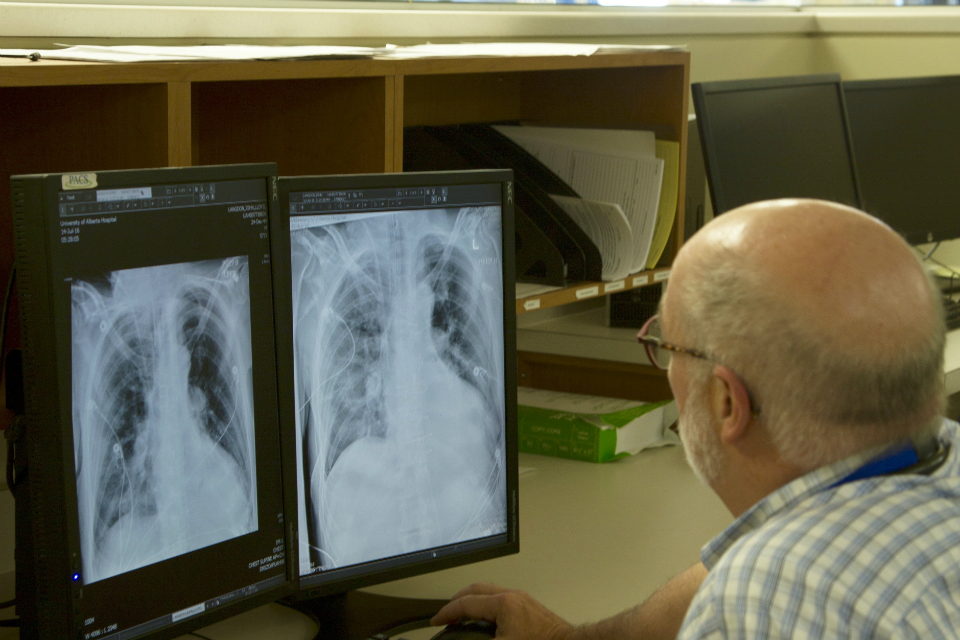Program fills critical need for standardizing e-health 'language'

As health authorities across Canada continue to modernize patient health records, moving from paper files and film X-rays to computer systems and digitized diagnostics, Canada’s health care sector has a desperate need for standardized “languages” to support a steadily growing world of web-based health communications.
A standardized health “language” will be taught starting in September at the University of Victoria, with a blended, online graduate certificate program in Health Terminology Standards that is the first of its kind in Canada.
“This terminology is on par with other professions like air traffic controllers or first responders,” says Andre Kushniruk, director of UVic’s School of Health Information Science. “Even the justice system has its own unique language for safe, effective communication.” Health informatics is still considered a new science, says Kushniruk, and teaching a standardized e-health terminology is as much a milestone for the profession as it is for UVic.
More than three years of research went into defining the competencies for this new “language,” explains professor Francis Lau, an initiative led by the Canadian Health Information Management Association (CHIMA) in partnership with Canada Health Infoway. In 2016, the association put out a national call to colleges and universities for an education program that would teach this terminology as an industry standard and best practice. UVic’s School of Health Information Science was the first to step forward.
“We were well poised to take this on,” says Lau who developed the program and will teach the first cohort. He points to the school’s long-standing relationships and leadership role within the national and international informatics sectors in helping to define these competencies from the start. This early work was well received by such groups as the International Standards Organization, which is responsible for developing global health care standards.
“Health has many different terminologies,” says Lau, as with diagnoses, medical procedures, pharmaceutical and anatomical abbreviations, even billing codes. “Currently, there are different health regions using different terminologies which can lead to errors and lost revenue.”
By adopting standard terminology, health professionals can communicate more effectively, more quickly, and better manage a growing volume of electronic data, says Kushniruk. “Canada needs educated professionals who can decipher these complexities using standardized terminology.”
The inaugural Health Terminology Standards graduate certificate program has 26 seats available to any e-health professional working in Canada. Deadline for applications is June 15, 2017.
Read more about the program including application information.
A standardized health “language” will be taught starting in September at the University of Victoria, with a blended, online graduate certificate program in Health Terminology Standards that is the first of its kind in Canada.
“This terminology is on par with other professions like air traffic controllers or first responders,” says Andre Kushniruk, director of UVic’s School of Health Information Science. “Even the justice system has its own unique language for safe, effective communication.” Health informatics is still considered a new science, says Kushniruk, and teaching a standardized e-health terminology is as much a milestone for the profession as it is for UVic.
More than three years of research went into defining the competencies for this new “language,” explains professor Francis Lau, an initiative led by the Canadian Health Information Management Association (CHIMA) in partnership with Canada Health Infoway. In 2016, the association put out a national call to colleges and universities for an education program that would teach this terminology as an industry standard and best practice. UVic’s School of Health Information Science was the first to step forward.
“We were well poised to take this on,” says Lau who developed the program and will teach the first cohort. He points to the school’s long-standing relationships and leadership role within the national and international informatics sectors in helping to define these competencies from the start. This early work was well received by such groups as the International Standards Organization, which is responsible for developing global health care standards.
“Health has many different terminologies,” says Lau, as with diagnoses, medical procedures, pharmaceutical and anatomical abbreviations, even billing codes. “Currently, there are different health regions using different terminologies which can lead to errors and lost revenue.”
By adopting standard terminology, health professionals can communicate more effectively, more quickly, and better manage a growing volume of electronic data, says Kushniruk. “Canada needs educated professionals who can decipher these complexities using standardized terminology.”
The inaugural Health Terminology Standards graduate certificate program has 26 seats available to any e-health professional working in Canada. Deadline for applications is June 15, 2017.
Read more about the program including application information.
-- 30 --
Photos
Media contacts
Sandy Polomark (School of Health Information Science) at 250-721-8576 or his@uvic.ca
Kate Hildebrandt (Communications Officer, Human and Social Development) at 250-589-8988 or katehild@uvic.ca

